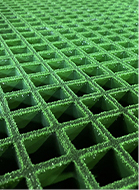loading...
- No. 9, Xingyuan South Street, Dongwaihuan Road, Zaoqiang County, Hengshui, Hebei, China
- admin@zjcomposites.com
- +86 15097380338
- Welcome to visit our website!
frp treads
Exploring the Importance of FRP Treads in Modern Applications
In the ever-evolving landscape of materials and construction, Fiber Reinforced Polymer (FRP) treads have emerged as a significant component across various industries. With their unique properties, such as lightweight, corrosion resistance, and high strength, FRP treads offer a practical solution for a myriad of applications ranging from industrial settings to architectural designs. This article delves into the multifaceted benefits and applications of FRP treads, showcasing their growing importance in modern engineering practices.
Definition and Composition of FRP Treads
FRP treads are manufactured from a composite material that combines a polymer matrix with fibers to enhance strength and durability. Typically, glass, carbon, or aramid fibers are used, resulting in a product that is not only lightweight but also boasts remarkable mechanical properties. The incorporation of these fibers allows FRP treads to withstand significant loads and resist wear in demanding environments, making them a preferred choice for many applications.
Advantages of Using FRP Treads
One of the primary advantages of FRP treads is their resistance to corrosion. Unlike traditional materials such as steel or wood, FRP does not rust or decay, making it ideal for environments exposed to moisture, chemicals, or harsh weather conditions. This non-corrosive nature extends the lifespan of the treads, reducing maintenance costs and replacement frequency.
Additionally, FRP treads are inherently lightweight, facilitating easier installation and transportation. This lightweight property does not compromise strength; in fact, FRP products can outperform many conventional materials in terms of load-bearing capabilities. The ease of handling and installation can lead to significant time savings in construction projects.
Moreover, FRP treads can be manufactured with various surface textures to enhance grip and safety. This characteristic is particularly crucial in applications where slip hazards are a concern, such as in industrial facilities or on outdoor stairways.
frp treads

Applications of FRP Treads
FRP treads are extensively employed in industrial settings, including chemical plants, wastewater treatment facilities, and food processing industries. In these environments, the resistance to chemicals and moisture makes them an ideal choice for walkways, platforms, and staircases. Furthermore, FRP treads are utilized in the construction of marine structures, where exposure to saltwater and other corrosive elements is common.
Beyond industrial applications, FRP treads have found their way into architectural designs. Their versatility allows designers to incorporate FRP in residential, commercial, and public spaces, providing not only functionality but also aesthetic appeal. The ability to mold FRP into various shapes and colors offers architects the creative freedom to explore innovative designs.
Additionally, FRP treads are becoming increasingly popular in the realm of renewable energy. Wind turbines, for instance, utilize FRP materials for their blades and other structural components, taking advantage of the material's lightweight and strength properties to optimize performance and efficiency.
Environmental Impact
As environmental concerns continue to rise, the sustainability of materials is under scrutiny. FRP treads contribute positively to this discussion. Their long lifespan and resistance to corrosion reduce the need for frequent replacements and repairs, leading to lower resource consumption over time. Moreover, advancements in recycling technologies mean that FRP waste can be repurposed, minimizing environmental impact and supporting sustainable practices.
Conclusion
In conclusion, FRP treads play a crucial role in modern engineering and construction. Their unique combination of lightweight, strength, corrosion resistance, and design flexibility makes them suitable for a diverse range of applications. As industries continue to seek materials that address both performance and sustainability, FRP treads stand out as a forward-thinking solution, embodying the principles of innovation and efficiency. As more sectors recognize their benefits, the future of FRP treads looks promising, paving the way for enhanced safety, durability, and design in the built environment.
-
The Rise of FRP Profiles: Strong, Lightweight, and Built to LastNewsJul.14,2025
-
SMC Panel Tanks: A Modern Water Storage Solution for All EnvironmentsNewsJul.14,2025
-
GRP Grating: A Modern Solution for Safe and Durable Access SystemsNewsJul.14,2025
-
Galvanized Steel Water Tanks: Durable, Reliable, and Ready for UseNewsJul.14,2025
-
FRP Mini Mesh Grating: The Safer, Smarter Flooring SolutionNewsJul.14,2025
-
Exploring FRP Vessels: Durable Solutions for Modern Fluid HandlingNewsJul.14,2025
-
GRP Structures: The Future of Lightweight, High-Performance EngineeringNewsJun.20,2025
